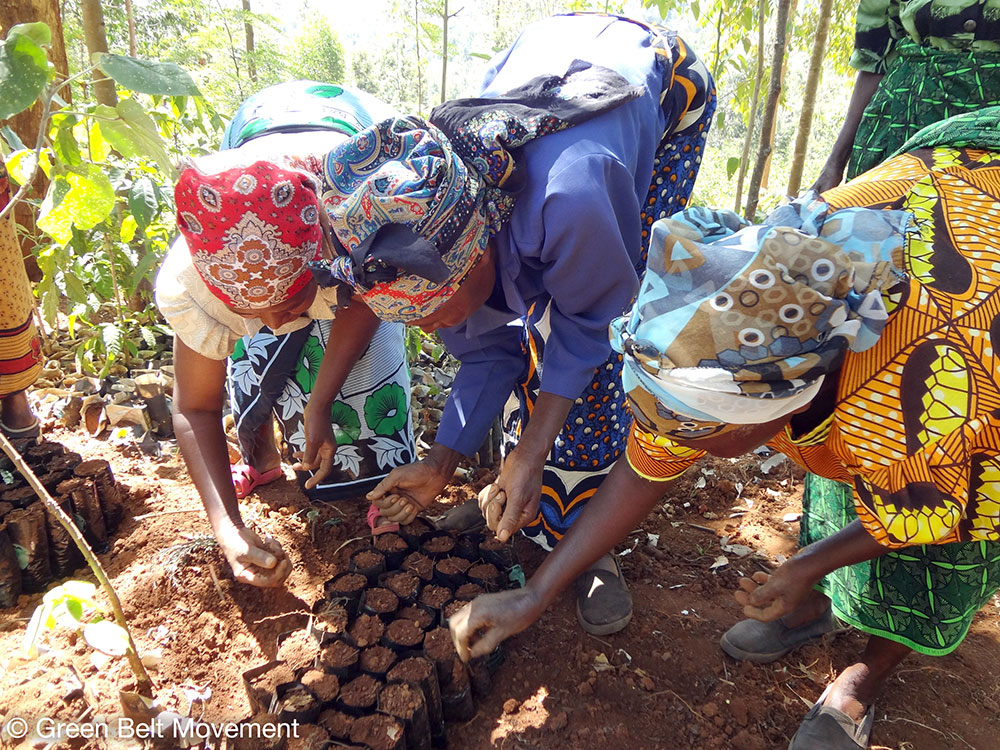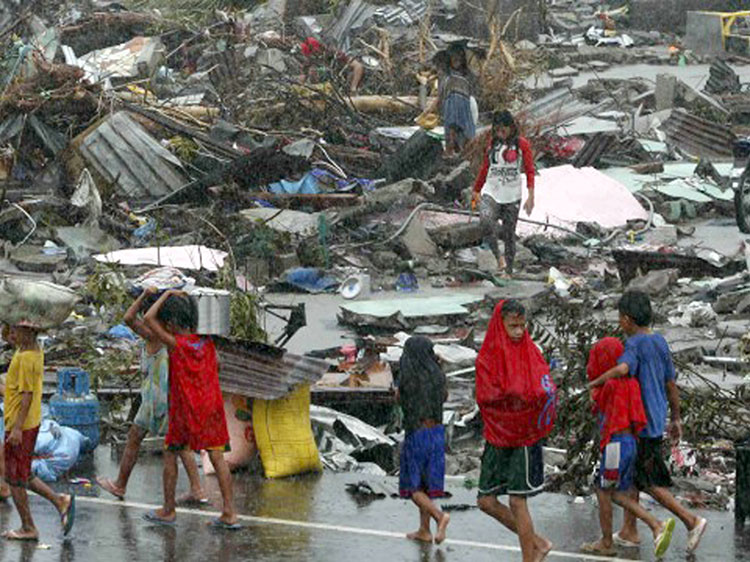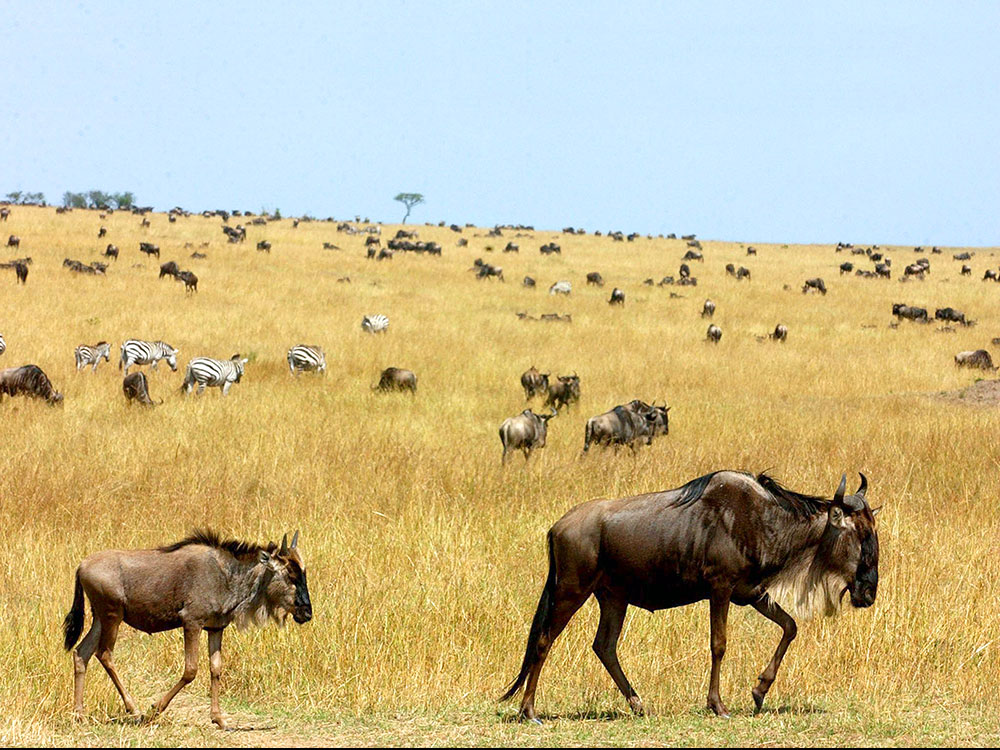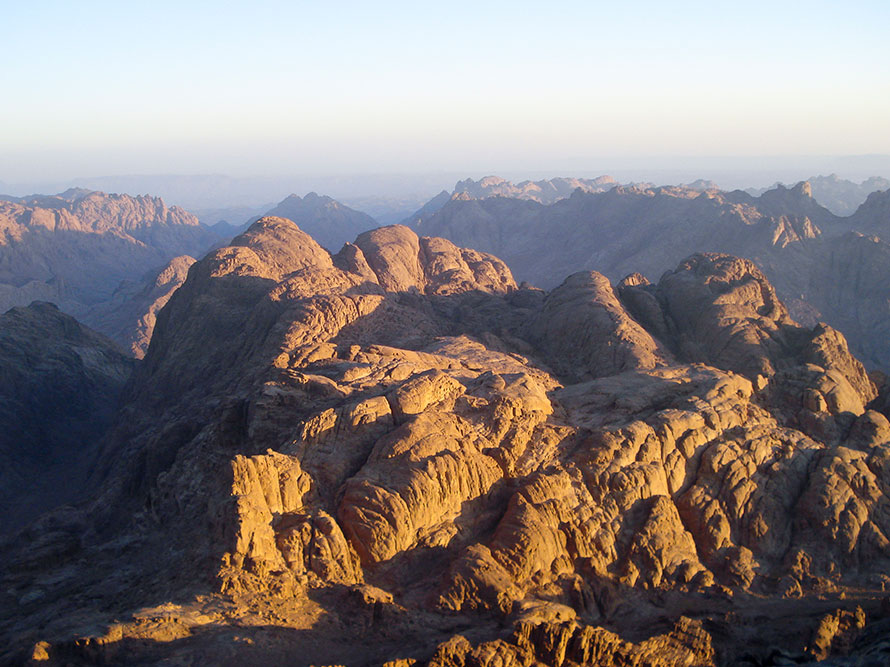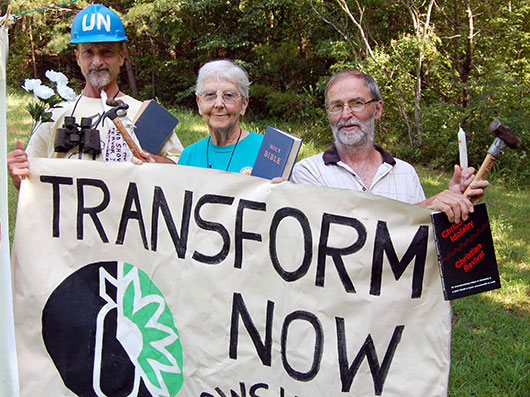One day a terrible fire broke out in a forest and the enormous wood was suddenly engulfed in wild flames. All the animals were frightened and escaped from their dens towards only one direction. They arrived at the bank of a big river with a strong current and, turning back, they could only stare at the fire which was consuming their habitat. They felt discouraged and powerless. They all were lamenting the destruction of their home: the wood. Each one of them thought that there was nothing to do in order to stop the fire…except the hummingbird.
On its part, the hummingbird decided to try. It ran to the stream, collected the little water it could and aimed at the forest fire. There it released on the fire the few drops of water that its beak was able to collect. Then it went back to the stream and repeated the operation. It did it again and again, going to and fro tirelessly. All the other animals stared at the hummingbird in disbelief. Some of them even tried to dampen its enthusiasm with comments as such: “Stop, leave it! The enterprise is too hard, you are too small, you are going to burn your wings, your beak is so tiny… It is impossible to extinguish all that fire!” But the hummingbird continued undaunted. At last, the lion shouted: “What are you doing?” The hummingbird, without stopping, answered: “I am doing what I can.”
It was May 2006 and it was with this little story that Professor Wangari Maathai, the Kenyan woman who, two years before, had received the Nobel Prize, started her lectio magistralis for the 58th Conference of the Association of International Educators, NAFSA, in front of seven thousand members from all over the world, gathered at Montreal, Canada. “What are you doing?” the neighbors had asked Wangari when they saw her plant her first tree in her garden. She answered:” I am doing what I can.”
She then did the same in the middle of the local market. To the women friends who were staring at her, she explained: “I want to fight against the indiscriminate cutting of trees, the disappearance of the forest, soil erosion, desertification, water pollution, and also against poverty, famine and the slavery of women forced as they are to walk for hours searching for firewood.”
She invited them to do the same: “You don’t need a university degree to plant a tree,” she said. This is how the first tree nurseries were born in many villages of Kenya’s Central Province. Then the initiative spread everywhere in Kenya. The first environmentalists from Sweden arrived and were fascinated by the hundreds, thousands of women who had become “skilled foresters without a degree.”
Wangari had an idea: “The seedlings are free. Even the work of the women is free. A little incentive, however, would not be bad.” Since then, because of international funding, for each seedling planted and still surviving after three months, the women started receiving few shillings. The government made available to Wangari some public places in the capital, Nairobi, and the Minister of Forestry promised to provide the seedlings free of charge. This was the Green Belt Movement, the brain child of Professor Wangari Maathai.
FIRST WOMAN UNIVERSITY PROFESSOR
Wangari Maathai was born on April 1, 1940, in the Nyeri District in central Kenya, of a family of simple means belonging to the Kikuyo ethnic group. She was, however, privileged to live in a part of the country of a breath-taking beauty, close to Mount Kenya, which the Kikuyu people call Kiri Nyaga (the Creator’s House) and to the Aberdare Range, the largest forest and water reservoir of the country. As she beautifully writes, the experiences of her very young age shaped her love for the land: “Nothing is more beautiful than cultivating the land at dusk. At that time of day, in the central highlands, the air and the soil are cool, the sun is going down, the sunlight is golden against the ridges and the green of trees, and there is usually a breeze. As you remove the weeds and press the earth around the crops, you feel content, and wish the light would last longer so you could cultivate more. Earth and water, air and waning fire of the sun combine to form the essential elements of life and reveal to me my kinship with the soil.
“When I was a child, I sometimes became so absorbed working in the fields with my machete that I didn’t notice the end of the day until it got so dark that I could no longer differentiate between weeds and crops. At that point, I knew it was time to go home, on the narrow paths that crisscrossed the fields and rivers and woodlots.”
As all the girls of the same age, Wangari was dreaming of going to school. She was more courageous than most and it was not difficult for her to fulfill her desires. She received quality education first with the Consolata Sisters and later with the Loreto Sisters. This was the solid foundation on which she later on built her future in teaching, in politics and in civil responsibility.
She then got a scholarship to study in the United States of America from an initiative that was supported by one of the leading promoters of national independence, Tom Mboya as well as the Kennedy Foundation on behalf of the Kenyan youth preparing for leadership positions. In 1964, she took a diploma in Biology and, in 1966, a degree in Science at Pittsburgh University in Pennsylvania. In 1971, back in Kenya, she completed her doctorate at Nairobi University. She then started teaching at the university. She was the first woman in East Africa to gain a Ph.D and to hold the position of university professor.
Wangari’s love for nature was soon tested by the population explosion and, consequently, by the need of growing ever more food. Moreover, in order to support the agricultural needs, people started cutting the nearby forests in order to extend their fields. In those years, it was almost impossible to make the farmers understand that, in the long run, the deforestation would have devastating effects also in agriculture and in the whole environment. Therefore, when Wangari started the campaign in favor of the land, many people looked at her with hostility.
THE GREEN BELT MOVEMENT
Notwithstanding the opposition, Wangari did not bend and even risking her personal safety, kept on with determination on the road she had started. For her, Mother Nature, as she used to say, needed first to be respected in order for people to enjoy the benefits of her goodness. In harmony with the African spirituality, Wangari cared first for the indigenous trees, the roots of which contributed considerably to check the soil erosion, and in particular, the mugumu tree, under the shade of which the most important meetings of the community were taking place since the ancestors used to value it as a manifestation of the vitality and creative power of God. Wangari had a special concern towards the young generations, aware as she was of the many implications of inheriting a totally exhausted land, robbed of its resources.
The efforts to keep the integrity of the environment found a concretization in 1977 with the birth of the Green Belt Movement that Wangari started and promoted. The main objectives of the initiative were to exercise pressure on the politicians in order to foster laws respectful of nature and spread the education about the environment among the youth, especially mobilizing the women. Kakura Forest, Uhuru Park and the Great Lakes Region will be remembered as among the most relevant initiatives in which Wangari lavished her competence and energies.
Kakura Forest is the main green lung of Nairobi, a section of the urban area always in the sight of developers and corrupt politicians engaged in building construction. Uhuru Park is the second green lung of the capital, a welcoming area for the free gatherings of the population, especially the slum dwellers. In order to defend the integrity of these two zones, Wangari had to face opposition, mudslinging campaigns and even political emargination.
In the Great Lakes Region, the huge African rivers – the Nile, the Congo and the Zambezi – are where so many endangered animal species originate and thrive. The Green Belt Movement became the spokesman of these areas and, up to the present, it maintains a network of educational activities. To plant trees is now a set feature in all the social gatherings of the area.
Wangari married in 1969 and had three children, but her powerful personality was too much for her husband who separated from her and eventually filed for divorce in 1979, saying that she was “a too strong-minded woman” and that he was unable “to control her.” Since then, Wangari’s life was a solitary, even if successful, battle.
SAVING UHURU PARK
As long as the women limited themselves to planting trees, there was nothing for the politicians to be afraid of. So much so that, in a few years, the plant nurseries had become six thousand and the “foresters without a degree,” more than eighty thousand. They could be all potential voters at the moment of political elections. On the other hand, the new forests could only please the politicians whose saw-mills were indiscriminately laying the woods in waste and whose foresters kept underselling the natural wealth of the country. But Wangari had something else in her mind.
“It is not only a question of reforesting the country – she stated but also of fighting for democracy and the respect of human rights.” She wanted especially to empower the women through seminars, laboratories, demonstrations and ecological initiatives in which science, social commitment and political education could go together. The Green Belt Movement became a network of initiatives concerning women education, family planning and campaigns against corruption.
The idea became popular also outside Kenya: in Tanzania, Uganda, Malawi, Lesotho, Ethiopia and Zimbabwe women got together to promote Wangari’s ideals. The experts in the environment from all over the world started appreciating Wangari. Several acknowledgments and awards started materializing, among them the Goldman Foundation Award (1991) which represents a kind of Nobel Prize among the ecologists. But the most pleasing acknowledgment was conferred to Wangari by her fellow women who called her their “Freedom Fighter.”
One of the most telling examples was when President Arap Moi himself wanted to build a 60-storey skyscraper right in the middle of the Uhuru Park, the central park of Nairobi, the capital. The budget for the building was 200 million dollars. Wangari shouted: “Uhuru means freedom, but this skyscraper is the exact opposite because it will destroy the last green island of the capital.” Wangari won and the project was abandoned.
The victory, however, was paid for dearly. The NGO Green Belt Movement was chased out of the government buildings and gangs close to Moi destroyed several seedling nurseries. A mudslinging campaign against Wangari was launched and President Moi himself called her “a crazy woman.” Of course the crazy trait shown by Wangari was her far-sighted commitment for the environment, something which is now taken for granted by the majority.
AT THE SERVICE OF PEACE
In October 2004, Wangari Maathai was awarded the Nobel Prize for Peace. The Nobel Prize at last came to an African woman, as representative of the heroic African women who are the backbone of their families and countries. In the written motivation for the award, “Wangari’s contribution to sustainable development, democracy and peace” are clearly mentioned. This sums up her steady commitment for the environment, her civic passion for the respect of human rights and the promotion of peace among peoples: a precious heritage worth keeping and valuing by everybody.
She wrote: “Although I was a highly educated woman, it did not seem odd to me to be working with my hands, often with my knees on the ground, alongside rural women. Some politicians and others in the 1980’s and1990’s ridiculed me for doing so. But I had no problem with it, and the rural women both accepted and appreciated that I was working with them to improve their lives and the environment. After all, I was a child of the same soil. Education, if it means anything, should not take people away from the land, but instill in them even more respect for it because educated people are in a position to understand what is being lost. The future of the planet concerns all of us and we should do what we can to protect it.”
In Africa, the binomial environment and peace constitutes an unbreakable reality: in fact, in no other continent is the desertification so worrying as the one that has happened in many African countries. And when the desert advances, the essential life infrastructures are lacking and entire peoples are forced to migrate in search of pastures, water, sustenance. Situations as such trigger strong tensions and social instability.
In her book, “The Religion of the Earth,” Wangari Maathai quotes, several times, Pope Benedict XVI’s message for the World Day of Prayer for Peace (January 1, 2010) on the theme: “If we want to keep peace, we must respect creation.” Wangari, peaceful champion of the environment, lived for all this and, in her person, peace, solidarity and citizenship became one single reality. She was then an elected member of Parliament and served as Assistant Minister for Environment and Natural Resources in the government of President Mwai Kibaki between January 2003 and November 2005.
Wangari died of cancer in 2011. Now, the indomitable messenger of the forests rests in the shade of the Democratic Space, in Kabele Campus of Nairobi University. In addition to the state funeral which took place in Uhuru Park and the religious ceremonies in Nairobi Catholic Cathedral, several moments of interreligious, ecumenical prayer took place in the capital and five thousand seedlings were planted in her memory.
A convinced, practicing Catholic and member of the Legion of Mary for her whole life, Wangari Maathai was, however, always very discreet in the practice of her faith, but public was her appreciation for whatever could unite the faithful of different denominations and religions in building a society that was nature friendly and respectful of all its inhabitants.

